Collectors didn't like them, but the artists loved them. Your opinon of Matte & Satin Finish Proofs.
Collectors were none too pleased when the Philadelphia Mint began to issue Matte Proof cents in place of the Brilliant Proof pieces in 1909. The series expanded in 1913 when the mint introduced the Buffalo Nickel. Many collectors complained that they couldn't see much difference between the coins they could get from the bank or in pocket change and the Matte Proofs for which they had to pay a premium. By 1916, the mint claimed that they could not make the new silver coins, the Mercury Dime, Standing Liberty Quarter and the Walking Liberty Half Dollar in the old brilliant format. By then Proof coin sale had dropped which prompted the to suspend their issuance.
What do you think? Do you think that the collectors had that had point, or do you think that they only lacked a level of sophistication for something different?
Here is a Matte proof 1913 Type I Buffalo Nickel.
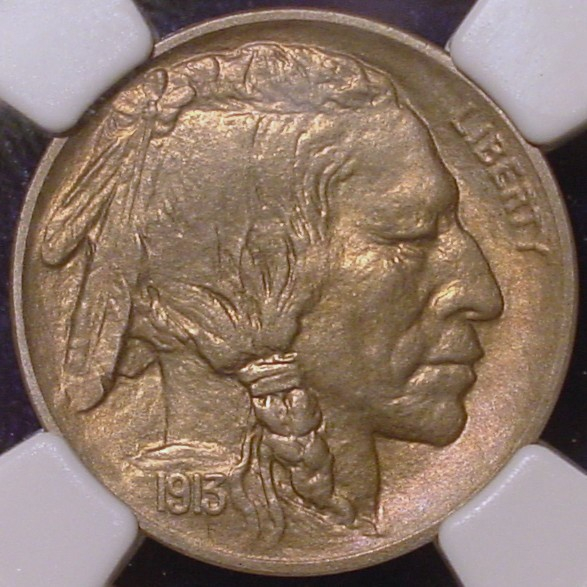
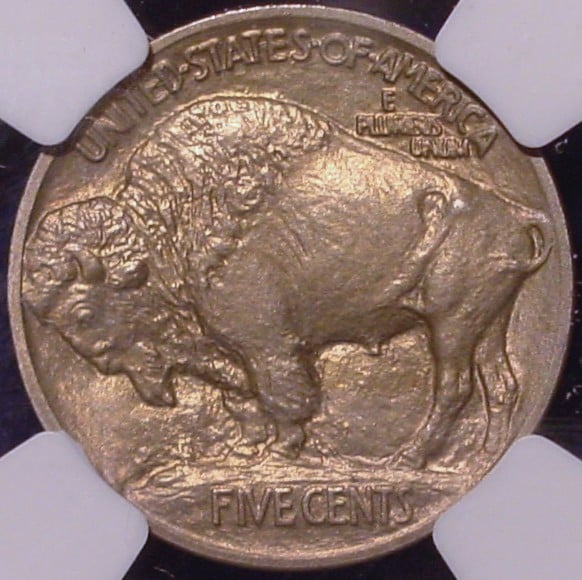
And here is business strike of the same design. Do you think that the Proof is worth a premium?
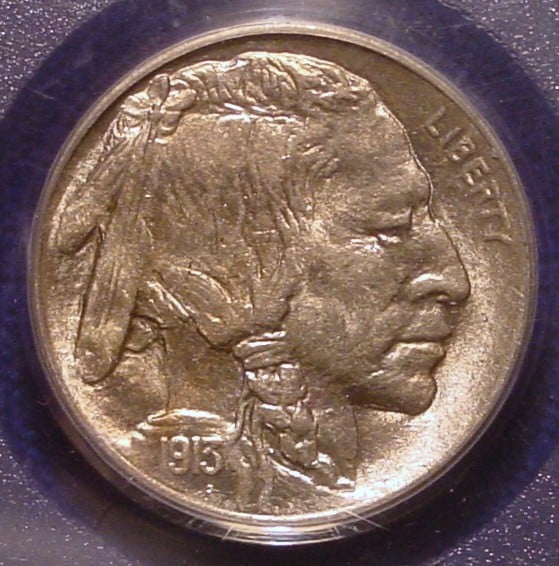
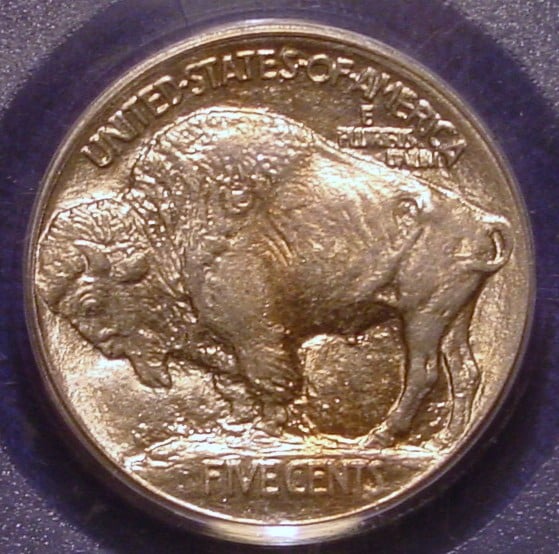
In 1936 the scenario was repeated. The issued the first 1936 Proof Buffalo Nickels in the Satin finish format, and the collectors complained.
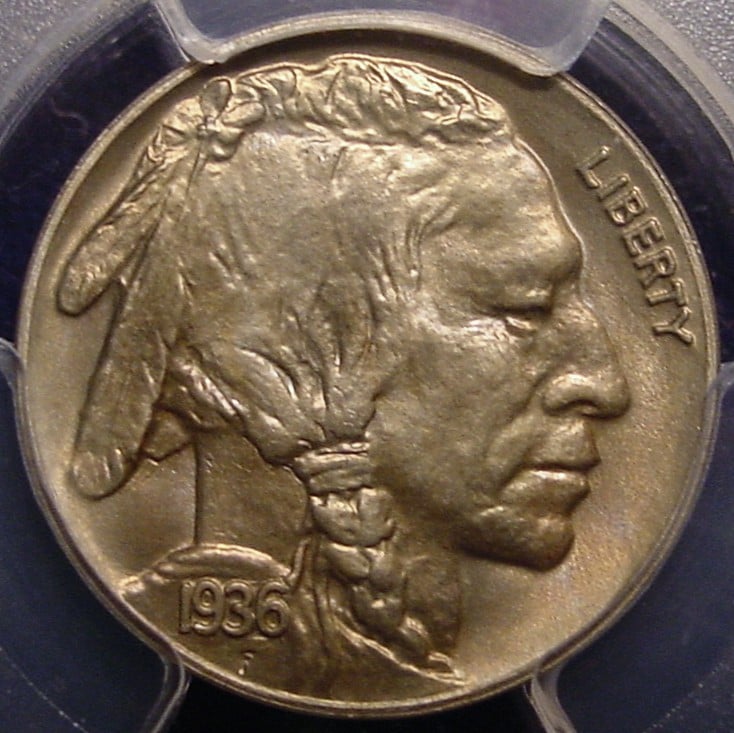
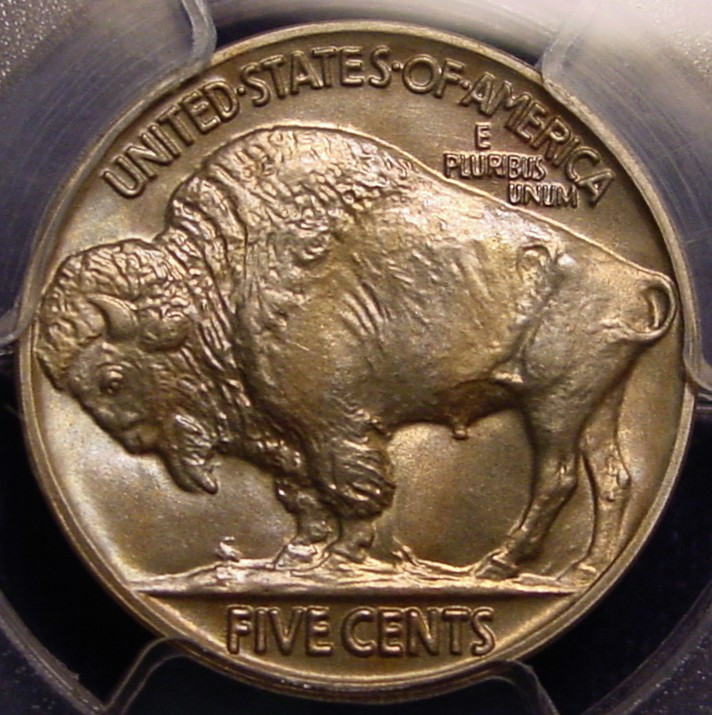
Unfortunately I don't have a Mint State 1936 nickel, but here is a 1938-D Buffalo five cent.
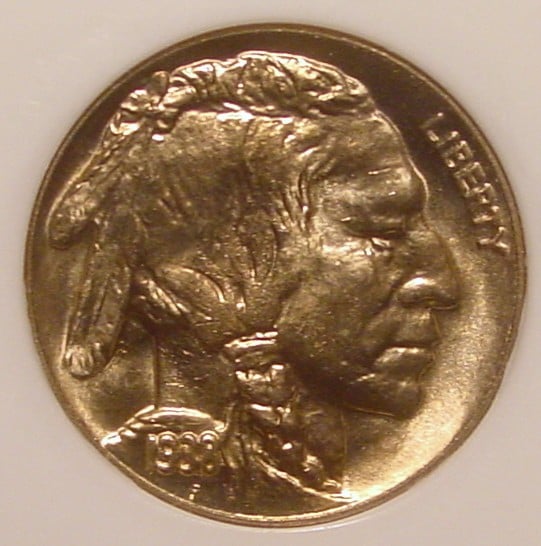
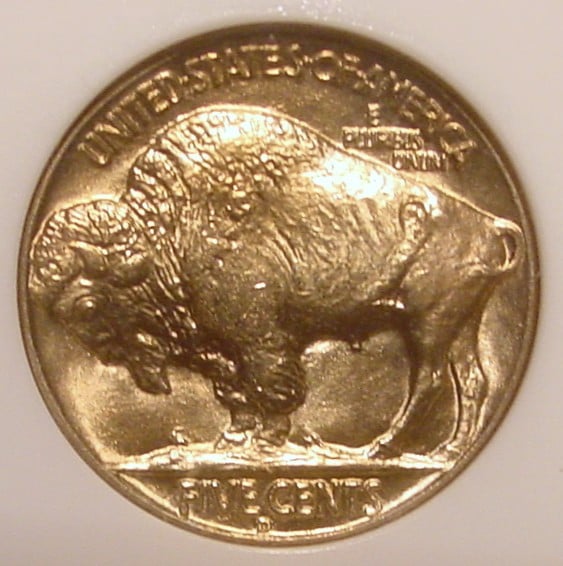
Finally the got the message and shined up the dies and the planchets to make these coins.
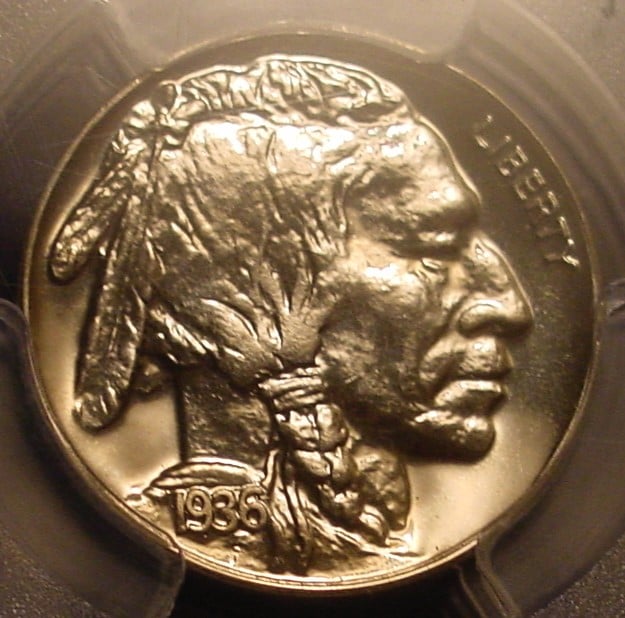
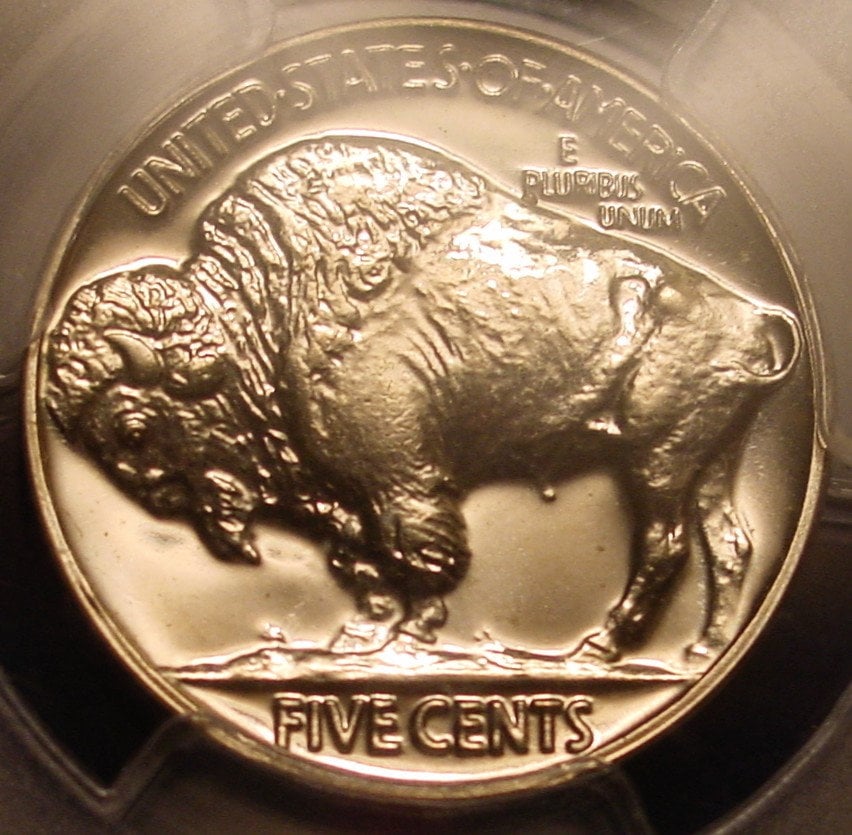
Which pieces do you prefer?
Comments
In some ways, I think the satin proofs look better than brilliant proofs. I mean, the brilliant proofs are shinier, but that's about it. I would love to see a matte proof Mercury dime, too bad they didn't make any.
I will admit, that I have been in...er...discussions about whether a raw coin was a matte proof or an early die state. It is sometimes hard to tell - at least to my less than artistic eyes.
The average collector historically has preferred the "shiney" coin. Show the 2 buffs to a non-collector and they will always gravitate towards the brilliant one. Having said that and being part of the MPL posse, I prefer the matte finish hands down. I also prefer the satin 1936 cent over its brilliant brother all day. The trick is to find the lustrous matte proof and satin coins so you get the best of both worlds. Good thread.
https://pcgs.com/setregistry/showcase/2819
Coin collectors like 'em bright and white. Art collectors like 'em satin and artsy.
I saw a Mercury Dime at the fall Baltimore show that had me thinking that it could have been a Satin Proof. The trouble it was hard to know how much the '30s and '40s Proof haze had dulled the surfaces. I've read that there are few Mercury Dimes that some people think might be satin pieces, but they have never been either confirmed or certified.
The "satin proof Mercury dime" story comes from, as usual, Walter Breen's stock of confusion.
1. There is nothing to indicate that Engraver Sinnock and others at the Philadelphia Mint intended anything other than brilliant proof silver coins.
2. Research shows that as a mirror-like proof die was used the reflection diminished.
3. If this dulling was not corrected the proofs would begin to show luster commonly seen on circulation coins.
4. Thus, some proof dimes, especially among the first patches of 1936, might have poorly reflective fields and resemble satin proofs.
However, there are differences.
A. A 1936 satin proof was made from a new die pair on a medal press. The dies were never polished, so they retained original surfaces and detail.
B. Brilliant proof dies were always polished - sometimes repolished several times - and they appear to almost always have had diminished detail due to inexperienced personnel being unfamiliar with this type of work.
C. The result is that dies intended for brilliant proofs from 1936-1942 have inferior detail when compared to a purpose-made satin proof, or even a high quality circulation strike.
The Test: Any "satin proof" 1936 dime must have detail and sharpness superior to a 1936 brilliant proof dime if it is an intentional product.
[See United States Proof Coins 1936-1942 for details.]
Interesting and insightful question and commentary. On larger coins though the mirror finish has an appeal of its own.
It was noted in another thread that trying to polish a die with irregular basin (curvature) was difficult. The pattern 1916 coins all demonstrate this. See the short article about 1916 pattern quarters on uspatterns.com.
I actually believe that the 1936 Satin Finish Proof nickel that I have is the best rendition of the Buffalo design that I have in my collection. I really enjoyed looking at the piece when I saw it at the Baltimore show. In the end I decided to get both types because of what I had read in Roger's book. I have two cents also, but I refuse to spend really big money Proof cents, so they are rather pedestrian. The Satin cent is an PR-65, Brown with no spots, and the Brilliant one is only PR-64, R&B, once more with no spots. In case you missed it I am not a fan of spotty Proofs.
Sounds like the book was helpful. I agree that the satin 1936 cent and nickel are much nicer than the brilliant versions.
Satin proof looks best.
While I haven't checked the pops, there are a very few 1937 CAM's I've seen that arrest the attention.
There is an totally undocumented sighting by Jim Halperin of a "satin proof" 1916 10c at a long ago trade show. JH know the fabric of the patterns well.
Welcome to Apochrypha Numismatica Per Manum Tertiari with a shout-out to @RogerB to not dignify this with a response.
Kinda like the matte proof gold
A: The year they spend more on their library than their coin collection.
A numismatist is judged more on the content of their library than the content of their cabinet.
I can appreciate Satin and Matte proofs but I think that I prefer brilliants slightly more.
Sometimes, it’s better to be LUCKY than good. 🍀 🍺👍
My Full Walker Registry Set (1916-1947):
https://www.ngccoin.com/registry/competitive-sets/16292/
I prefer the matte and satin proofs over the brilliant ones. I agree that the 1936 satin Buffalo is the most attractive coin in the series as far as the finish/surfaces go but I still like the 1913 Var MP the best.
I would rather agree with Bill Jones that matte and satin proof coins can be too similar to their MS counterpoints. But in copper that is graded BN their toning definitely sets them apart:
The detail in the strike in that era is spectacular, and the proofs seem to tone much better than the MS coins. This is also true for the Buff nickles of this era with great toning. The coins Bill posted seem a little flat to me, but maybe that is more to the intent of his post. Perhaps someone can post some Buff satin proofs with great toning.
OINK
Here's another example of all 3 finishes used during the proof buffalo nickel run:
Commems and Early Type
I've never seen any in person so that may limit my perspective but from the photos I've seen on here I am not impressed, and would not pay any premium for them. They look like standard coins that have gone hazy to me.
The 1937 that CommemDude just posted looks spectacular to me. It looks just as if not more well struck than the satin, EXCEPT the hair above the tie. But the rest of the coin makes up for what ever drawback that may be, and I had to scroll back up to the image three times before I even noticed.
The Saint-Gaudens and Pratt proof gold was sandblasted, not "matte." The term "matte proof" should only be applied to Lincoln and Buffalo proofs before 1936.
It is my opinion that the two finishes provide different perspectives and each has an inherent beauty. I like them both..... @CommemDude ...Though I will say, that 1937 PR67 is absolutely stunning.... Cheers, RickO
I loved the toning on this 1936 satin. I very much regret selling this beauty.
- Bob -

MPL's - Lincolns of Color
Central Valley Roosevelts
Thanks for the education!
A: The year they spend more on their library than their coin collection.
A numismatist is judged more on the content of their library than the content of their cabinet.